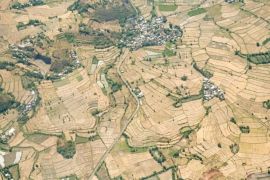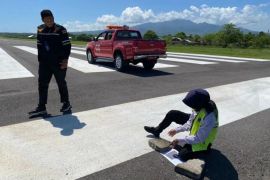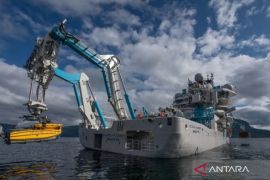"This is because ulemas are able to carry out syiar and preach to provide a better understanding regarding disaster mitigation, considering that almost all parts of Indonesia are disaster-prone areas," she explained in a statement received here on Tuesday.
She said she believes that the Indonesian people, especially Muslims, will be very obedient to ulemas. Moreover, the information conveyed would be packed with religious values, she added.
It is hoped that the synergy between ulemas and the government will strengthen the mitigation action plan in an effort to reduce risks due to natural disasters, Karnawati said.
"Natural disasters cannot be avoided, but we can try and prepare to reduce the risk," she remarked.
Karnawati said she is optimistic that the involvement of ulemas and religious leaders in educating the community regarding disasters will accelerate the realization of a disaster-resilient community. That way, the target of zero victims in natural disasters can be achieved.
"Awareness of disasters is very important because by increasing the understanding of disasters, we can reduce and anticipate the impact of disaster risks," she said.
According to Karnawati, the frequency of natural disasters in Indonesia has continued to increase. For example, the average number of earthquakes recorded in 2008–2016 was 5,000-6,000 a year, then in 2017, the number increased to 7,169. This figure further climbed to more than 11,500 in 2019.
Meanwhile, between the year 1600 and 2021, there have been 246 tsunamis in Indonesia, she pointed out.
In terms of climate change, 2016 was the hottest year, with an anomaly value of 0.8°C from the observation period from 1981 to 2020. The second hottest year was 2020, with an anomaly value of 0.7°C, and 2019 was the third hottest, with an anomaly value of 0.6°C, she said.
This also resulted in the melting of snow in Puncak Jaya, Papua. Initially, the snow-covered area spanned around 200 square kilometers, but now, only 2 sq km or one percent is left.
The "eternal snow" and ice at Puncak Jaya were a unique feature of Indonesia, considering that the country is located in the tropical zone.
Another phenomenon has been the emergence of the seroja tropical cyclone, which triggered flash floods and landslides in East Nusa Tenggara on April 2021, she noted.
Cyclone phenomena are very rare in tropical areas such as Indonesia. However, in the last 10 years, tropical cyclones have become more frequent, she added.
"This condition must be anticipated with strong mitigation efforts by all parties and elements of society, including ulemas and religious leaders. Otherwise, the impact will be difficult to handle," Karnawati cautioned.
Related news: Central Java seeks collaboration on disaster mitigation with Japan
Related news: E Java Governor urges regional heads to strengthen disaster mitigation
Related news: 267 aftershocks hit Flores Sea as of Wednesday morning: BMKG
Translator: Devi Nindy S R, Resinta S
Editor: Sri Haryati
Copyright © ANTARA 2021












